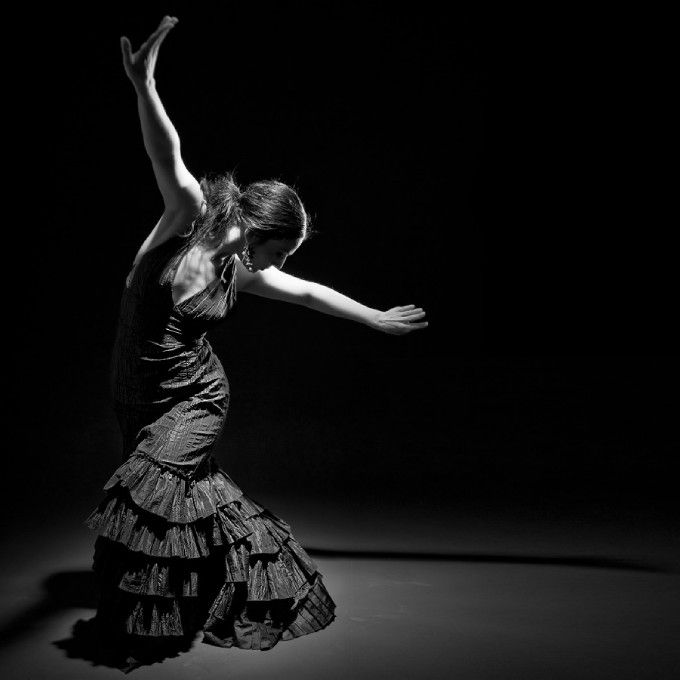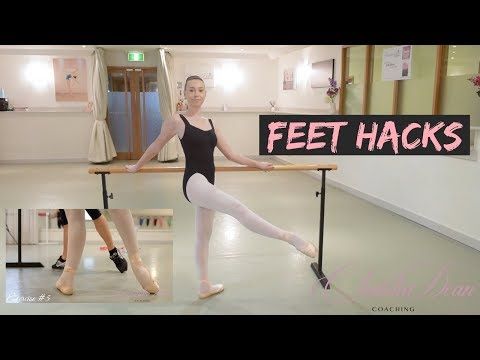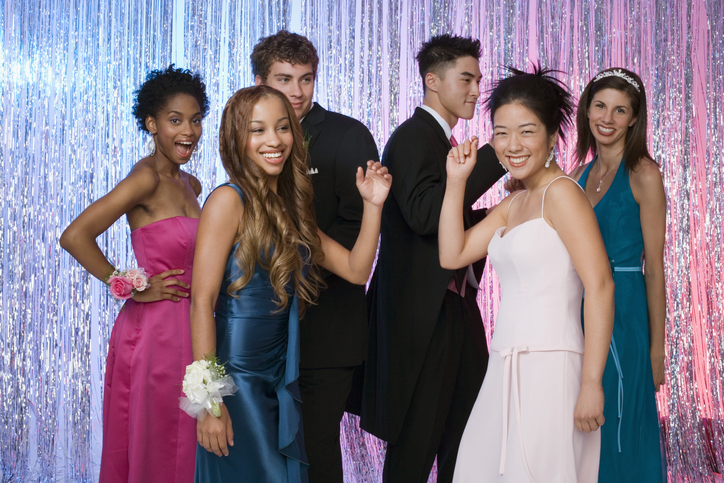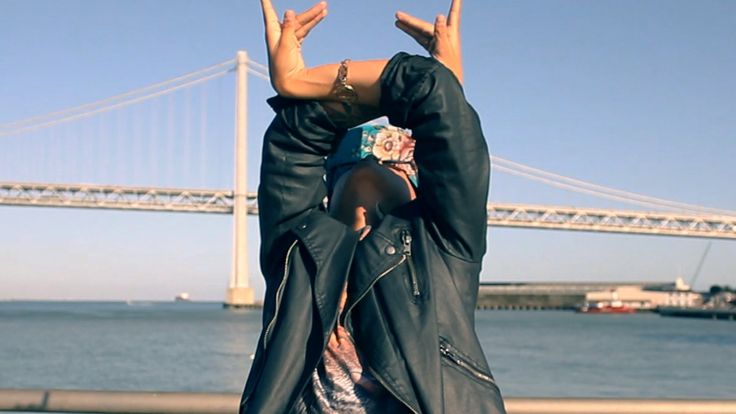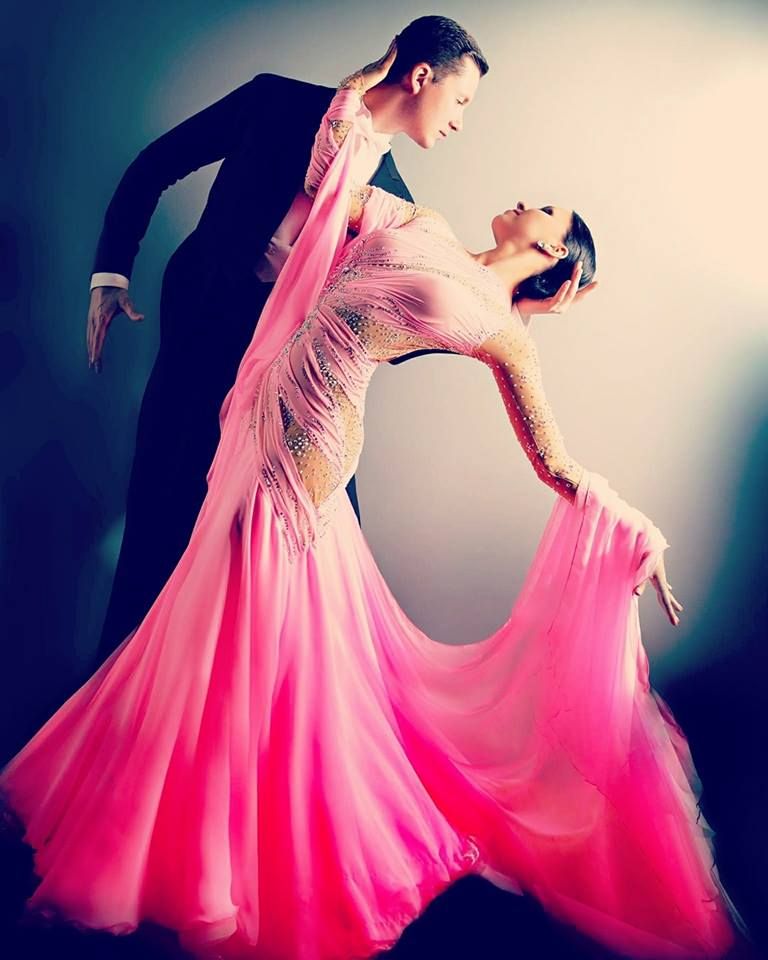How do you flamenco dance
The Beginner's Guide to Flamenco
Flamenco is such a captivating art form and it enthralls and entices novices to begin a journey of learning it. So, they sign up for a class and then……
FREAK OUT! Why? Who knew flamenco was so complicated! There are the steps, then the footwork and the hand coordination and then that weird 12 count rhythm and all the different rhythms and, and, and….
It can be overwhelming for sure. Realize that flamenco isn’t like learning how to ride a bike. If you think of learning how to dance flamenco more like learning a new language, then it’s easier to digest the whole concept and just enjoy the journey.
But fear not, here is YOUR general guide to flamenco for beginners.
A SUPER BRIEF HISTORY OF FLAMENCO
Flamenco stems from hundreds of years of Andalusian (southern region of Spain) history that interplays with Andalusian, Moorish, Jewish and Gitano (Roma) cultures before and after the Reconquest of Spain (1492). But it is from the Gitanos’ anguished history that much of flamenco’s earliest most profound rhythms come from. In the beginning, the cante (singing) was the center of flamenco and stayed within family settings. By the late 18th century it began to venture into a performance environment and grew to the Golden Age of Flamenco in the late 19th century where the “cafe cantantes” flourished. This is where the dancer became the major attraction of the performances. Flamenco entered the theater in the late 19th and early 20th century where it was criticized for falling victim to commercialism.
FORMS OF FLAMENCO
At its core, flamenco consists of toque (guitar), cante (singing), and baile (dance). The music of flamenco is based on different palos (rhythms). Think of your favorite song and think of others doing covers of it or sampling it in variations. You could hear the chords of that song and immediately recognize it as your favorite song- quick, name that tune! That’s the same with flamenco. There are many rhythms like Alegrias, Guajiras, Tangos, Solea, Fandangos, Seguirilla, etc. They are all identifiable by their own tempo, feeling, melody and chords. Some are danced while others are only sung.
There are many rhythms like Alegrias, Guajiras, Tangos, Solea, Fandangos, Seguirilla, etc. They are all identifiable by their own tempo, feeling, melody and chords. Some are danced while others are only sung.
FLAMENCO TODAY
Although Flamenco is highly associated with Spain, it is still an Andalusian art form where it is still taught in homes through an oral tradition and occurs at informal gatherings called juergas. It is also taught formally in dance academies throughout Spain and has become a world wide phenomenon such that it has been declared a World Heritage Treasure by UNESCO in 2010. Flamenco aficionados from all over the world practice flamenco and flock to Spain every year for workshops and studies.
Generally, you’ll see flamenco in three forms- casera, tablao, teatro. Casera (home-style) means the kind of flamenco you’ll find at homes danced by non professionals at parties or juergas. This is where you’ll see grandma get up to do a little pata’a por bulerias at a wedding.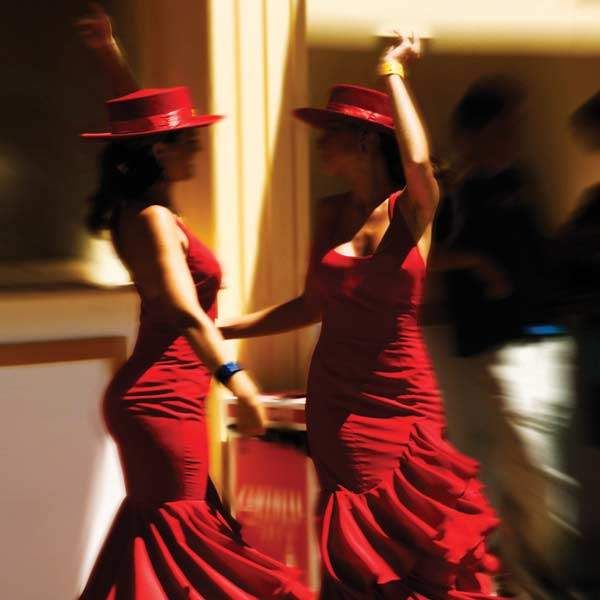 Then there’s tablao flamenco which is the type performed at the flamenco restaurants or clubs. These are small venues and tend to be improvised, although there may be some rehearsal for ongoing shows. Finally, teatro (theater) are the big flamenco productions that you see touring with company dancers, a choreographer and many musicians. Much thought is put into costuming, lighting, story and choreography.
Then there’s tablao flamenco which is the type performed at the flamenco restaurants or clubs. These are small venues and tend to be improvised, although there may be some rehearsal for ongoing shows. Finally, teatro (theater) are the big flamenco productions that you see touring with company dancers, a choreographer and many musicians. Much thought is put into costuming, lighting, story and choreography.
From there you could say there are two types of dance styles seen in tablao and theater and it’s from how the dancer learned to dance. Gitano style tends to be taught within a Gitano family home and is more raw and unrefined. Then the “rest” of flamenco styling tends to be quite broad but the general idea is that it’s learned in the dance studios and dancers may also train in other styles such as ballet. One isn’t better than the other, they just have different stylings.
COMPONENTS OF FLAMENCO FOR DANCERS
New beginners will most likely learn Tangos first, which is a fun and light hearted 4-count rhythm, then move on to one of the 12 count rhythms after several weeks.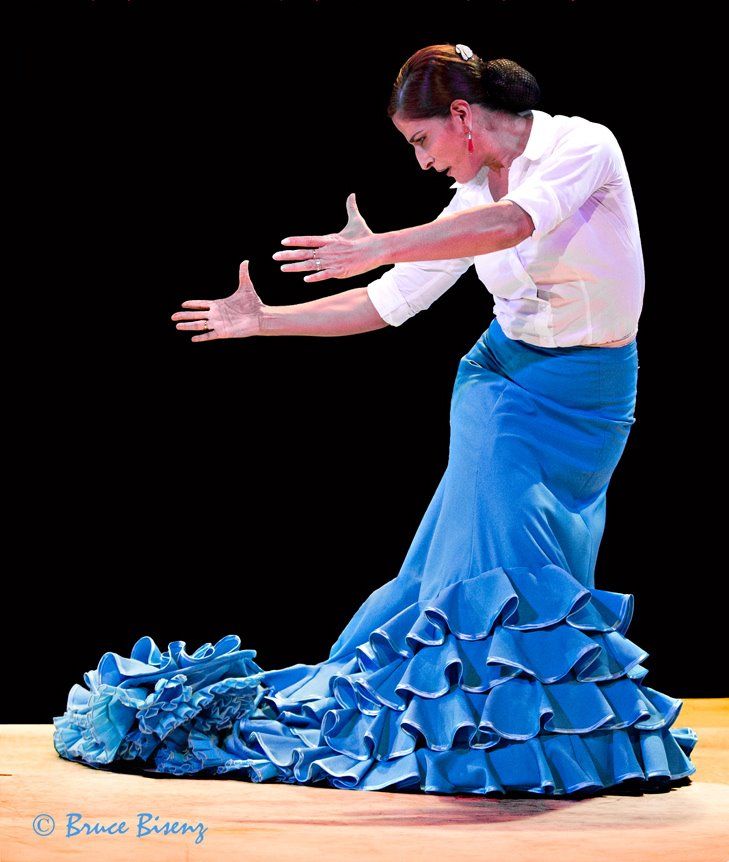 But what do they actually learn?
But what do they actually learn?
We start off with palmas, which is the hand clapping that goes along with keeping the rhythm. It’s important to be able to “hear” the rhythm and to keep time with the palmas. Then we move on to learning the hand movements that when done correctly look like beautiful fluttering birds. Then there’s marcaje which are the marking steps followed by pies (pronounced pee-yes, not the desserts) which is any of the rhythmical footwork that can be used as an accent or for a whole footwork sequence (escobilla).
Dancers learn all the various technique but we’re always learning the cante and the compás. We can’t dance without it.
In a live flamenco show, the dancer is in tune with the singer and the guitarist. They’re all playing off of each other just like a good jazz band when they’re improvising. If the dancer brings up the tempo, the musicians follow. If the guitarist plays a falseta, the dancer dances without footwork to let the guitarist shine.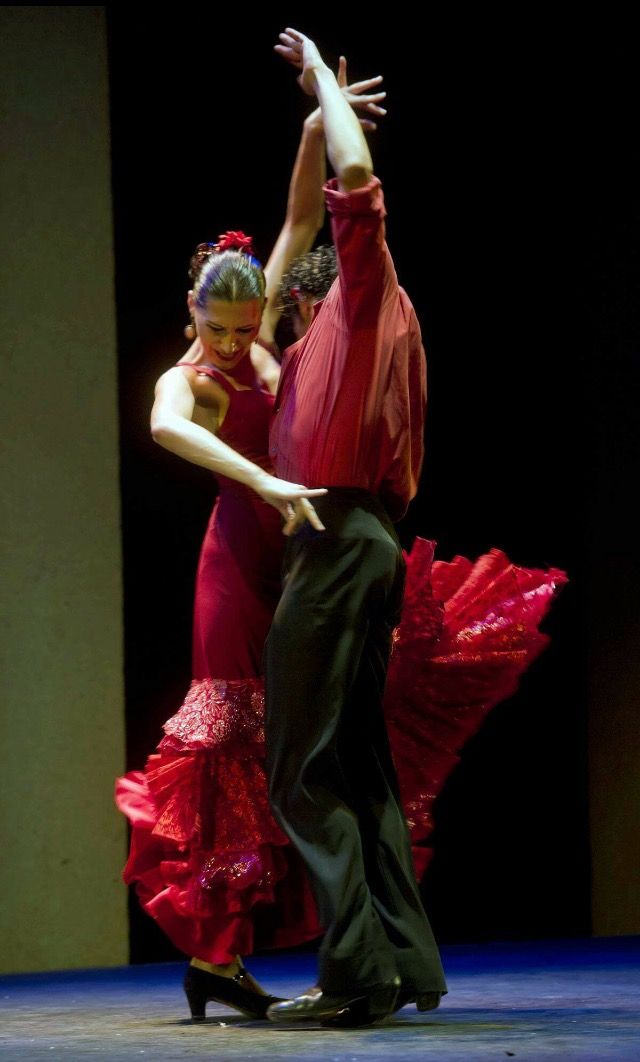 When the singer is singing, the dancer dances according the mood. It’s a conversation between all three elements.
When the singer is singing, the dancer dances according the mood. It’s a conversation between all three elements.
COMPAS
The most important element is the compás, which is the rhythm. In the United States, we teachers generally teach flamenco in Spanglish, speaking English while sprinkling flamenco terms in Spanish. For example I’ll say, “You’re dancing out of compás,” which means “You’re dancing out of rhythm. I will also say, “We’ll do this step for 4 compases and then transition.” In this case, compás means a measure- a count of 4 or a count of 12, depending on which palo (rhythm) we are dancing.
Now, compás is the one thing that can truly trip up a dancer. It’s important to be open to enveloping the compás to listen to it, to hear it, to feel the accents. Usually the 4 count rhythms are easier to dance to for American dancers because we’re accustomed to the count. However, it’s the 12 count that is most challenging, but it’s more prevalent in flamenco.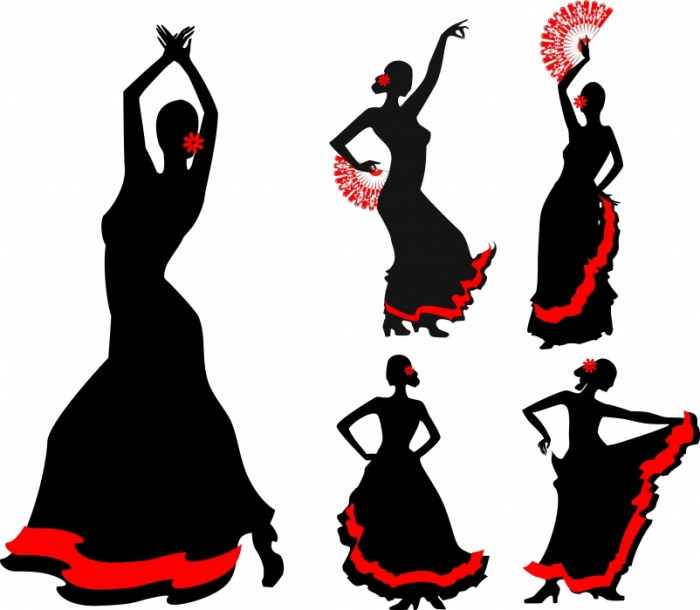
The 12 count rhythm generally starts on 12 and ends on 10 with the accents on 12, 3, 6, 8, 10. Whaaaaaat? Basically, the rhythm begins on the 12 count of the measure and then when it ends, it ends on 10.
12 – 1 – 2 – 3 – 4 – 5 – 6 – 7 – 8 – 9 – 10 – 11 – 12 – 1 – 2 – 3 – 4 – 5 – 6 – 7 – 8 – 9 – 10
This shows you two compases of 12, with the accents on 12, 3, 6, 8, 10 and then it ends on 10. Do you remember the musical West Side Story? The song “America” is in Buleria which is a 12 count rhythm.
12 – 1 – 2 – 3 – 4 – 5 – 6 – 7 – 8 – 9 – 10
I – like – to – BE – in – a – ME – RI – CA
LOL. It’s true!
HOW TO LEARN FLAMENCO
The only way to learn flamenco is to get out of your own way, meaning that we can over think things sometimes. Flamenco involves allowing yourself to open up, releasing while there still is a tension. Kind of like don’t over think when you’re simmering in your flamenco energy, getting ready to reach a boiling point! But the other obvious things are to show up to class, practice, listen to flamenco, and watch flamenco.
Flamenco involves allowing yourself to open up, releasing while there still is a tension. Kind of like don’t over think when you’re simmering in your flamenco energy, getting ready to reach a boiling point! But the other obvious things are to show up to class, practice, listen to flamenco, and watch flamenco.
Sounds like a lot, I know! But when you have the flamenco bug, all of it is a joy and feeds our passions (even when we’re frustrated at not understanding a particular piece of footwork!)
So, sign up for your local flamenco class or join my Online Flamenco Studio and enjoy the process. Show up, breathe and release. OLE!
Flamenco dance: the movement of arms
Flamenco dance: the movement of arms
In flamenco dance, the dancers interpret with the body what the sing transmits, lyrics that are usually loaded with feeling: from the deepest sorrows to moments full of contagious joy.
For this to reach the public, the dancers use their body to express all these emotions. The wiggle of the figure is accompanied by movements of smooth and elegant arms that contrast with ‘zapateado‘, sometimes very intense. On the flamenco tablao, the interpreter communicates with everything.
The wiggle of the figure is accompanied by movements of smooth and elegant arms that contrast with ‘zapateado‘, sometimes very intense. On the flamenco tablao, the interpreter communicates with everything.
The movement of the arms, hands and fingers gives grace and gives magic to the dance. It is also the element through which, together with the contoneo of the body, it is possible to reinforce that ‘communication of feelings’ that each flamenco style possesses, such as joy, sensuality, sadness or passion, among others.
These delicate and elegant movements become a true work of art when everything is in harmony in flamenco dance: movement of arms, hands, fingers and body.
When we go to a flamenco show, on the tablao this synchronization seems easy, but in reality it is not as simple as it seems. Getting the right technique requires a lot of effort and hours of work so that everything flows naturally. The good placement of the arms, the proper movement of the hands and fingers is essential so that the final result is the right one, that is to say, that not everything is valid in flamenco art.
To perform a dance correctly, the interpreter has to know how to place and move the arms so that when you take them from one position to another, do so as naturally and beautifully as possible. For example, the hands of flamenco dancers must always be above the waist.
The twist of the wrist must be in both directions and know how to coordinate the arms with the rotation of the wrists. Although it may seem like a simple task, the essential thing is for artists to do all these movements at the same time in a natural way.
How the arms move in flamenco dance?
In relation to the movement of arms, the ‘floreo’ and the ‘braceo’ are essential to dance flamenco because they are used throughout the execution of the different flamenco styles that are interpreted, both in the movements from one side to another, as in the accompaniment of other movements of the body and, as we have indicated at the beginning, the ‘zapateado’.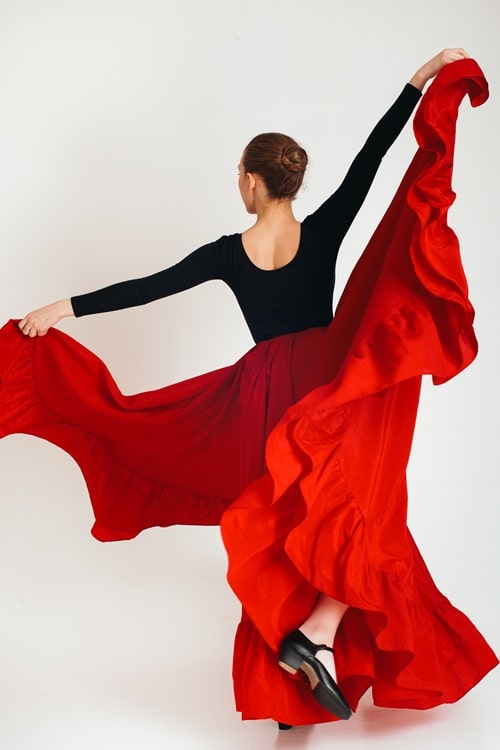
In the ‘braceo’ (arm movement), the most basic thing is to move the arms semicircularly, from top to bottom outside the torso, or also from bottom to top through the center of the torso. It is responsible for giving character to the interpretation, hence the position is very important, which plays a key role in the interpretation. The arm movement can be strong and dominant or fragile and delicate.
The ‘floreo’ is the movement of hands and fingers that consists of moving the arms and at the same time turning the wrists in a circular way, while the fingers open and close.
In the movement of the arms, hands and fingers, if you notice there is a slight difference between how the man and woman do it. The men dancers usually keep their fingers together, while the women perform movements from the little finger to the index, which gives a more beautiful appearance to the rotation.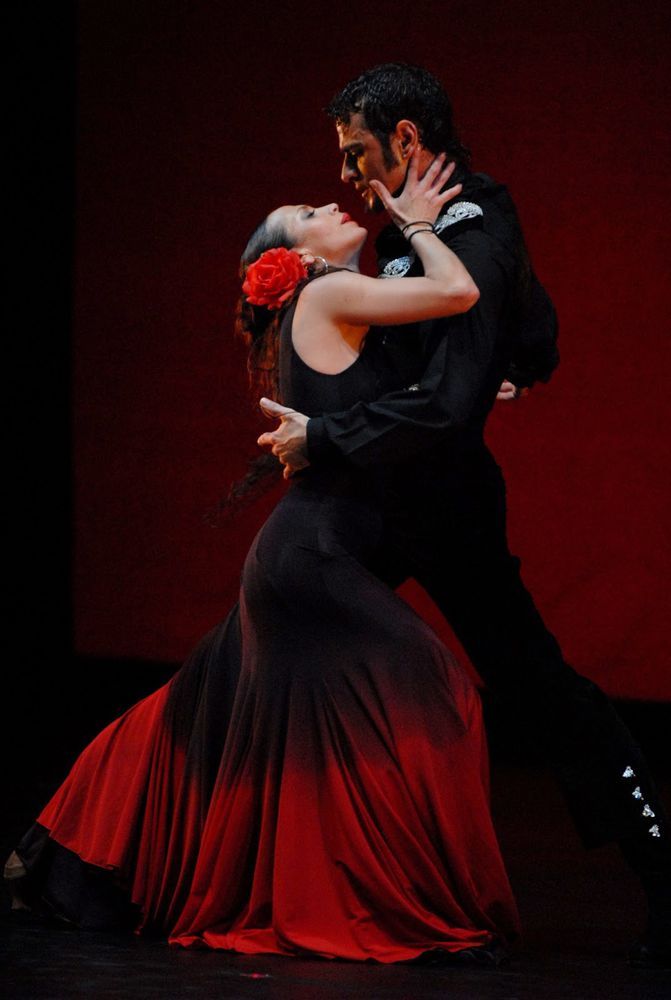
Traditional hand movements in flamenco dance
Flamenco music and dance are the fruit of centuries of influence and the fusion of multicultural elements, whose result seduces the whole world. Flamenco is an art that is characterized by accommodating the artist’s personal improvisation.
In the case of dance, the spontaneous expressions of the dancers during their performance, grant them a special nuance that enrich the final result. The way in which the arms, hands or fingers are moved are also personal hallmarks that characterize the execution of many artists.
Remember that flamenco dancing is manifested in more than fifty different styles, depending on the emotional criterion or its origin, among other elements. That is to say, the artist must respect the structure and elements of each suit he plays, but by adding his personal stamp, he differentiates his flamenco interpretation from another.
Flamenco is a very visual art, hence the dancers also speak with their hands. They sound and sing with palms and clicks when they are happy or they are also used to transmit passion, lament, delicacy, elegance or pain, depending on the type of movement the performer performs with them.
They sound and sing with palms and clicks when they are happy or they are also used to transmit passion, lament, delicacy, elegance or pain, depending on the type of movement the performer performs with them.
Throughout the history of flamenco dancing, many hand movements, performed by great dancers and bailaores, have remained as traditional for this art, such as:
- The fact of not taking off the fingers for men.
- The detachment only two fingers, the index and the heart, in the case of men, but this movement was also very typical of the dancer Pastora Imperio, who used them with a hand turn down and inside.
- Forming a circle with the fingers heart and thumb for women, or making conches or ringlets.
- Other forms that are also very typical and traditional in the movement of the hands is taking handfuls, calling someone, with an open hand as a farewell or completely tense as a gesture.
As we can see the movement of the arms, hands and fingers are fundamental elements for flamenco dance.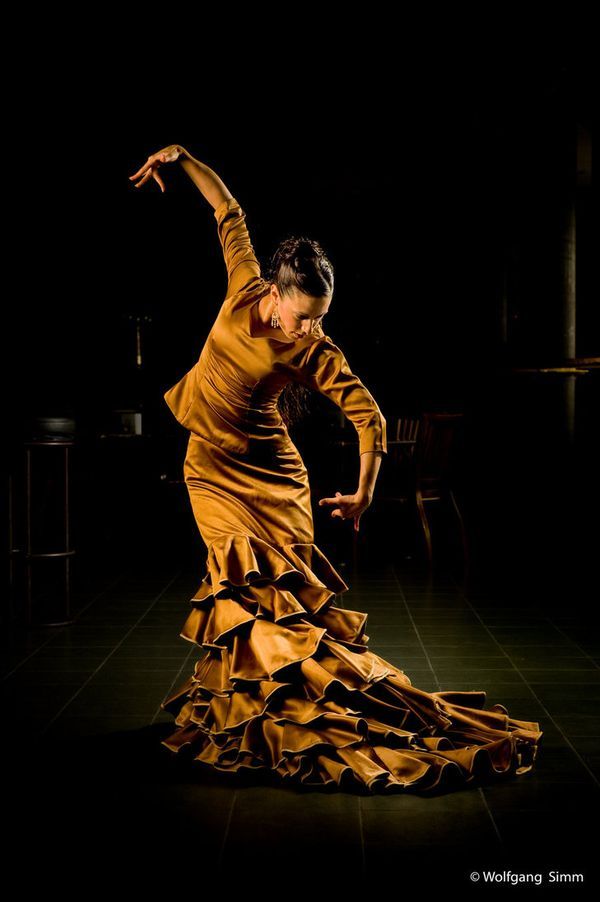 Enjoying a live performance is undoubtedly one of the most recommended experiences to appreciate the grace and elegance that artists transmit with these movements. If you visit Seville, our recommendation is that you visit our tablao flamenco and do not miss the flamenco show that we celebrate every day at El Palacio Andaluz.
Enjoying a live performance is undoubtedly one of the most recommended experiences to appreciate the grace and elegance that artists transmit with these movements. If you visit Seville, our recommendation is that you visit our tablao flamenco and do not miss the flamenco show that we celebrate every day at El Palacio Andaluz.
flamenco, flamenco dance, flamenco seville, flamenco styles, movement of arms
Recommended Posts
Flamenco referents in Seville
The cantiñas, characteristic flamenco singings of Cádiz
The flamenco long-tailed dress
10 questions to the participant of the project "Dancing on TNT"
Happiness to those who have ever seen this fragile branch dancing, because with its movements it awakens a sea of emotions and feelings. I remember very well the performance of Marina Yakovleva in the 6th season of the Dancing on TNT project.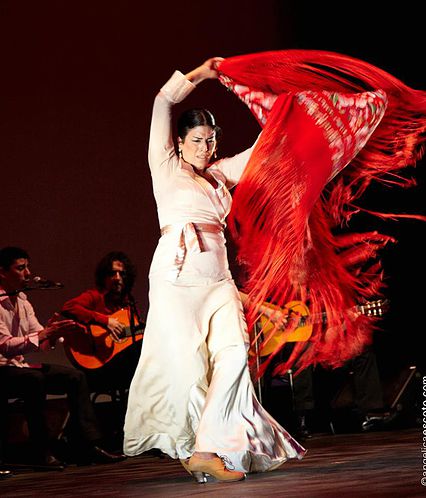 Bright, powerful, reminiscent of ball lightning and fireworks at the same time. Miguel said so that he sat through the whole room with his mouth open. Beauty Tatyana Denisova, judging by her facial expressions, mentally danced with Marina, and Yegor Druzhinin asked the participant why she needed a project, because she was already doing well. The choreographers announced the fact that our compatriot in "Dances" in chorus, she made such a strong impression on them. It was two years ago.
Bright, powerful, reminiscent of ball lightning and fireworks at the same time. Miguel said so that he sat through the whole room with his mouth open. Beauty Tatyana Denisova, judging by her facial expressions, mentally danced with Marina, and Yegor Druzhinin asked the participant why she needed a project, because she was already doing well. The choreographers announced the fact that our compatriot in "Dances" in chorus, she made such a strong impression on them. It was two years ago.
Marina Yakovleva did not stay long in the project, almost immediately she decided to return to Krasnodar. She speaks of “Dances” on TNT with great respect, the vision in the project of herself and her work simply did not coincide with the tasks pursued by the organizers of the show - to create some kind of universal dancer who can perform any choreography, regardless of personal preferences.
Read about how the flamenco maestro lives today and how the unique culture feels on the Kuban land, read in the material of Krasnodarskiye Izvestiya.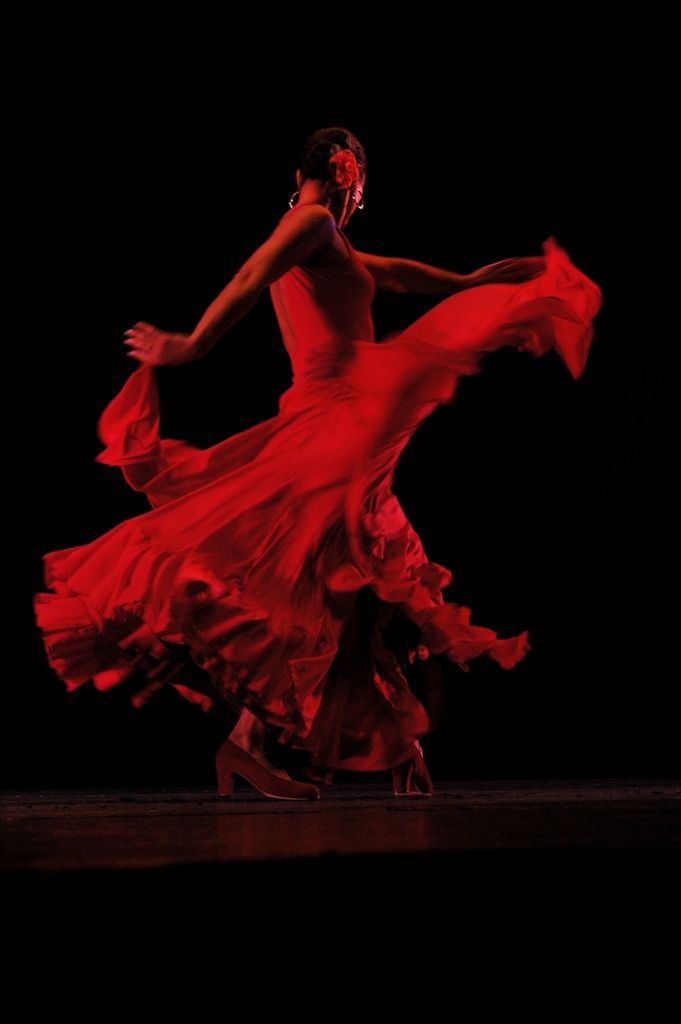
- Marina, when the media talk about talented people, they often use the cliché "sings or dances from the cradle." Looking at you, you might think so too. When did you first meet flamenco? Where did you see?
— At first I heard flamenco, but didn't see it, but purely subconsciously I felt what movements should be done. And the first flamenco video is a video for the song Ain't It Funny by Jennifer Lopez. Professional dancers also danced with the star. Then, in the seventh grade, when the Internet came into our lives, I began to watch other clips, master classes. What impressed me the most was Carlos Saura's five films about the art of flamenco. They became my first "teachers".
— Why didn't you study in choreographic circles? Why only at home, by yourself?
— I have always danced by myself: at home, on the street, at family parties, school and city concerts. But for some reason, my parents did not want to send me to the circle.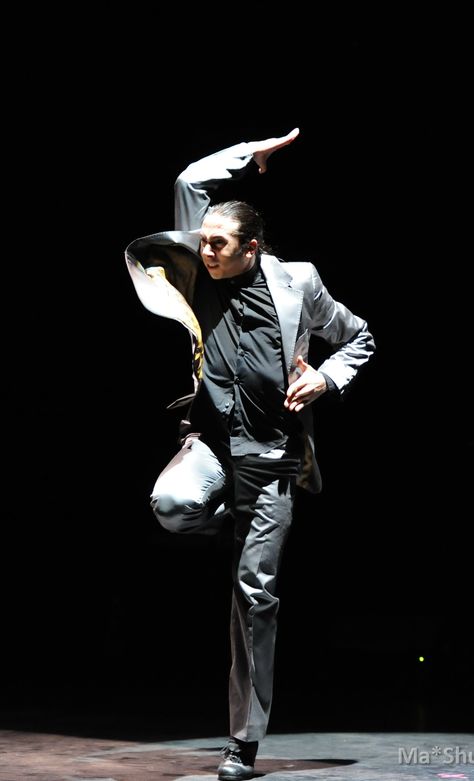 To all requests, my mother answered: "The set has already ended, let's do it later." Instead of dancing, she brought me to a music school. Now I understand that it was the right choice. I began to feel the music sensitively, which greatly influenced my dance. Perhaps that is why improvisation is easy for me, and this is very important in the art of dance.
To all requests, my mother answered: "The set has already ended, let's do it later." Instead of dancing, she brought me to a music school. Now I understand that it was the right choice. I began to feel the music sensitively, which greatly influenced my dance. Perhaps that is why improvisation is easy for me, and this is very important in the art of dance.
When I started using public transport, which was in the fifth grade, I drove to the House of Creativity, where the choreographic studio worked, and signed up there myself. But the main school of dance was classes with oneself. Now I advise all novice dancers to spend more time in improvisation, this forms a personal style and taste and what is called art. One thing is skill, technique, and another thing is to dance to the music that you like and inspire you. If you just repeat the movements, you can get away from your body nature, and it is different for everyone.
— But you didn't reach the level of flamenco you have now, did you? At the TNT casting, you said that you studied in Spain.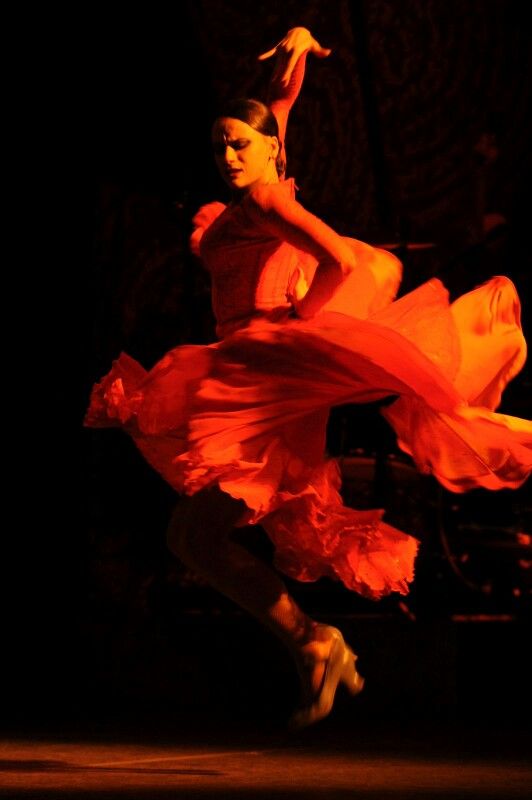 Tell us about the journey you went from dancing to Carlos Saura's movies to the professional you are today?
Tell us about the journey you went from dancing to Carlos Saura's movies to the professional you are today?
— After school, I entered the Faculty of Philology of the Arkhangelsk State University, under the student exchange program I left for Poland, the city of Poznan. In addition to studying, she attended classes in modern. Once I saw that the flamenco theater, which had come on tour, was rehearsing in the next room. I met the members of the group, I was allowed to attend the rehearsal. Probably, then the final understanding came that I couldn’t do without dancing, that this is the thing that I want to do all my life, but already professionally.
After university, I returned to Russia, entered the choreography department of the Arkhangelsk Art College. My trips began to Moscow, St. Petersburg, where I took master classes from the Spaniards. After graduating from college, I moved to Krasnodar: I wanted to be closer to the south - the northern climate never suited me.
— Well, Krasnodar is still closer to Spain than Arkhangelsk… How did the center of Kuban meet you?
— Here my independent life began, I got students. It was difficult: I taught and grew up with my students.
— And when did Spain happen?
- Fast enough. I started learning the language, going to master classes in this country, getting to know and spending time with flamenco people. It shaped me both as a dancer and as an artist. I just fell in love with the south of Spain. Andalusia with its narrow streets, multi-colored tiles, semi-circular window shutters turned out to be close to me in spirit.
It was very difficult for the Spaniards, but the teachers saw that I did not give up. Ursula Lopez, one of my first teachers, never took her eyes off me. It seemed to me that she understood my intention and put her strength into me, as she does with everyone who comes to her class for a reason. There, in principle, there is a very respectful attitude towards those who come to master classes - flamenco dancers are glad that they are interested in their art and are happy to pass it on to others.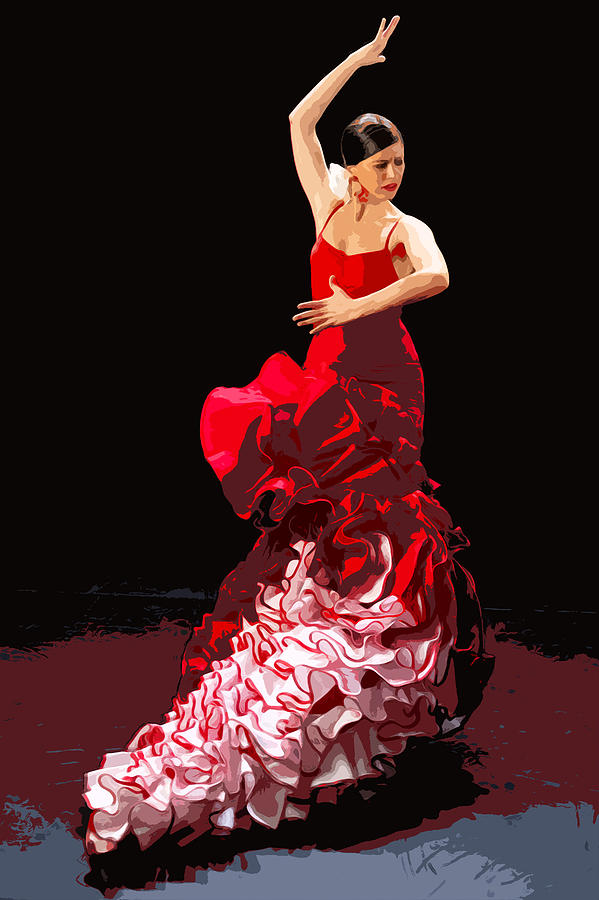
— What else did they surprise you with?
- Because they have no age. We usually have adult dancers who only teach, they don't dance anymore. There is no such thing. When at my first master class in Moscow I saw Belen Maya - this is a very serious and weighty person in the world of flamenco, she starred in a film by Carlos Saura - I was amazed at her skill and speed of movement. But then Belen Maya was far over 40.
And there are many such examples! La Farruca, the mamita of a large gypsy clan that carries the flamenco culture. Despite her advanced age and rather heavy weight, she moves with incredible energy and grace!
I was also captivated by the openness and cordiality of people: when I got to a lesson with Carmen Ledesma, first of all she approached each student and hugged him. This Spaniards are very similar to our southerners.
— Is that why they also dance flamenco in the Kuban? And, in principle, why do you think Russians are very fond of Spanish culture?
- Good question. For some reason, it so happened that we dance our Russian dances a little. Look how often guys of Caucasian nationalities perform lezginka - it's great! This is their strength and unity. Thanks to the dance, they keep themselves in great physical shape, plus it is also an amazing psychological release. And we, Russians, somehow lost it.
For some reason, it so happened that we dance our Russian dances a little. Look how often guys of Caucasian nationalities perform lezginka - it's great! This is their strength and unity. Thanks to the dance, they keep themselves in great physical shape, plus it is also an amazing psychological release. And we, Russians, somehow lost it.
Popular music does not relax the mind. Because it is very flat: tuff, tuff, tuff. And folk music is diverse, and a person by nature wants this difference, which really gives us psychological relaxation. Apparently, feeling this intuitively, we are happy to master the culture of other peoples. And flamenco is danced not only in the Kuban, but also in Siberia, the Urals, the Far East and in Russian capitals.
Speaking specifically about the Krasnodar Territory, I feel comfortable working with people here in terms of mentality, because southern people are open, and also weighty, they firmly plant their feet on the ground. As one of my students, a blooded Kuban, said: “We create life from the earth.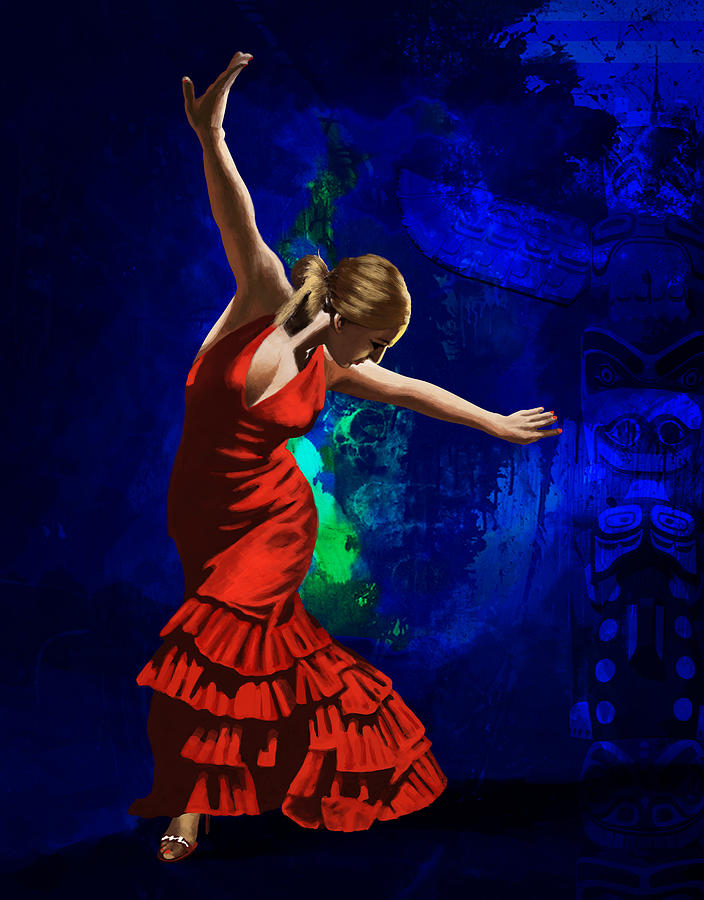 ” This is reflected in their character, feelings, because a person who often walks barefoot on the ground is more confident on his feet, he is closer to nature and to himself. It helps a lot to understand flamenco.
” This is reflected in their character, feelings, because a person who often walks barefoot on the ground is more confident on his feet, he is closer to nature and to himself. It helps a lot to understand flamenco.
— Marina, for me, flamenco is the story of a woman, very middle-aged, with a broken heart, always with an unhappy love that José left. I don’t want to offend, but when I first saw you on TV, it seemed to me that you were much older.
- I heard someone say, "When you dance flamenco, it's like you're connecting with God." I think everyone sees their own. Probably, tragic flamenco is known a little more in our country, because it touches our deep soul more. In fact, there are many styles, this is the dance of life, it contains all the themes. There is, for example, the alegrias style, the name is translated as “joy”. There are styles with flirtatious notes and playful melodies - columbian, guajira. There is even a goofy, bizarre performance of flamenco. It all depends on how you feel and what kind of music you choose.
It all depends on how you feel and what kind of music you choose.
— By the way, you can also see adherents of this dance on Krasnaya Street on weekends. Is this your studio?
— Unfortunately, no. Rather, I don’t specifically participate there, but if I had a little more time, I would dance with pleasure on Krasnaya. We have several schools in Krasnodar. Perhaps among the dancers there are my students. If so, then I'm just happy about this fact.
— When I saw an ad that you were holding a master class, I came to try it myself with pleasure. To my surprise, people of all ages and builds gathered in the hall. What can you say about your students? Who are they? Why go to flamenco?
— Difficult to answer unambiguously. My students are people who do not shy away from difficulties, with a sense of humor, open and kind. Many come for physiological and emotional relaxation. And, of course, for aesthetics.
Flamenco is an aesthetic of the highest level.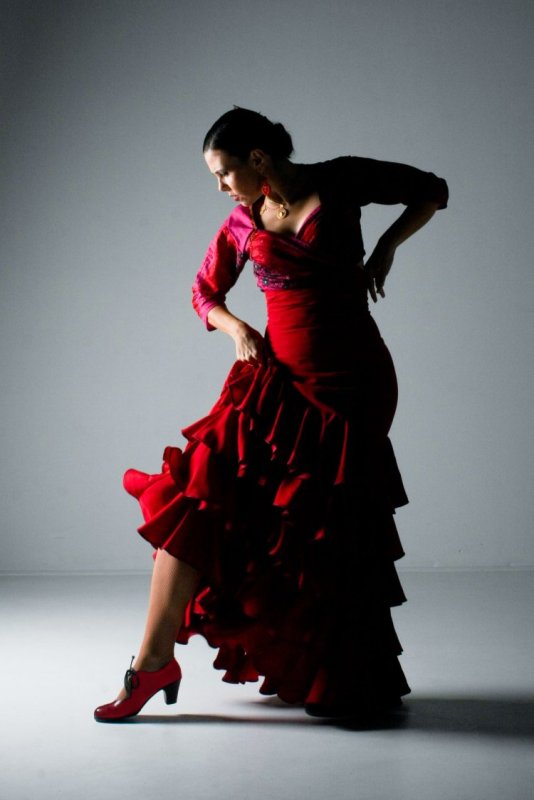 No one will say that this is a stupid dance. It is beautiful, graceful and very powerful and smart! And they go for truth and depth. A Russian person feels sincerity very well. That's why he goes to flamenco.
No one will say that this is a stupid dance. It is beautiful, graceful and very powerful and smart! And they go for truth and depth. A Russian person feels sincerity very well. That's why he goes to flamenco.
Text: Yulia Osipova
“When you dance flamenco, it's like you connect with God”: 10 questions for a participant of the project “Dancing on TNT” | Krasnodarskiye Izvestiya
Happiness to those who have ever seen this fragile branch dancing, because with its movements it awakens a sea of emotions and feelings. I remember very well the performance of Marina Yakovleva in the 6th season of the Dancing on TNT project. Bright, powerful, reminiscent of ball lightning and fireworks at the same time. Miguel said so that he sat through the whole room with his mouth open. Beauty Tatyana Denisova, judging by her facial expressions, mentally danced with Marina, and Yegor Druzhinin asked the participant why she needed a project, because she was already doing well.![]() The choreographers announced the fact that our compatriot in "Dances" in chorus, she made such a strong impression on them. It was two years ago.
The choreographers announced the fact that our compatriot in "Dances" in chorus, she made such a strong impression on them. It was two years ago.
Marina Yakovleva did not stay long in the project, almost immediately she decided to return to Krasnodar. She speaks of “Dances” on TNT with great respect, the vision in the project of herself and her work simply did not coincide with the tasks pursued by the organizers of the show - to create some kind of universal dancer who can perform any choreography, regardless of personal preferences.
Read about how the flamenco maestro lives today and how the unique culture feels on the Kuban land, read in the material of Krasnodarskiye Izvestiya.
– Marina, when the media talk about talented people, they often use the cliché “sings or dances from the cradle”. Looking at you, you might think so too. When did you first meet flamenco? Where did you see?
– At first I heard flamenco, but didn't see it, but purely subconsciously I felt what movements should be done. And the first flamenco video is a video for the song Ain't It Funny by Jennifer Lopez. Professional dancers also danced with the star. Then, in the seventh grade, when the Internet came into our lives, I began to watch other clips, master classes. What impressed me the most was Carlos Saura's five films about the art of flamenco. They became my first "teachers".
And the first flamenco video is a video for the song Ain't It Funny by Jennifer Lopez. Professional dancers also danced with the star. Then, in the seventh grade, when the Internet came into our lives, I began to watch other clips, master classes. What impressed me the most was Carlos Saura's five films about the art of flamenco. They became my first "teachers".
– Why didn't you study in choreographic circles? Why only at home, by yourself?
– I have always danced by myself: at home, on the street, at family parties, school and city concerts. But for some reason, my parents did not want to send me to the circle. To all requests, my mother answered: "The set has already ended, let's do it later." Instead of dancing, she brought me to a music school. Now I understand that it was the right choice. I began to feel the music sensitively, which greatly influenced my dance. Perhaps that is why improvisation is easy for me, and this is very important in the art of dance.
When I started using public transport, which was in the fifth grade, I drove to the House of Creativity, where the choreographic studio worked, and signed up there myself. But the main school of dance was classes with oneself. Now I advise all novice dancers to spend more time in improvisation, this forms a personal style and taste and what is called art. One thing is skill, technique, and another thing is to dance to the music that you like and inspire you. If you just repeat the movements, you can get away from your body nature, and it is different for everyone.
But the main school of dance was classes with oneself. Now I advise all novice dancers to spend more time in improvisation, this forms a personal style and taste and what is called art. One thing is skill, technique, and another thing is to dance to the music that you like and inspire you. If you just repeat the movements, you can get away from your body nature, and it is different for everyone.
– But you didn't reach the level of flamenco you have now, did you? At the TNT casting, you said that you studied in Spain. Tell us about the journey you went from dancing to Carlos Saura's movies to the professional you are today?
– After school, I entered the Faculty of Philology of the Arkhangelsk State University, under the student exchange program I left for Poland, the city of Poznan. In addition to studying, she attended classes in modern. Once I saw that the flamenco theater, which had come on tour, was rehearsing in the next room. I met the members of the group, I was allowed to attend the rehearsal.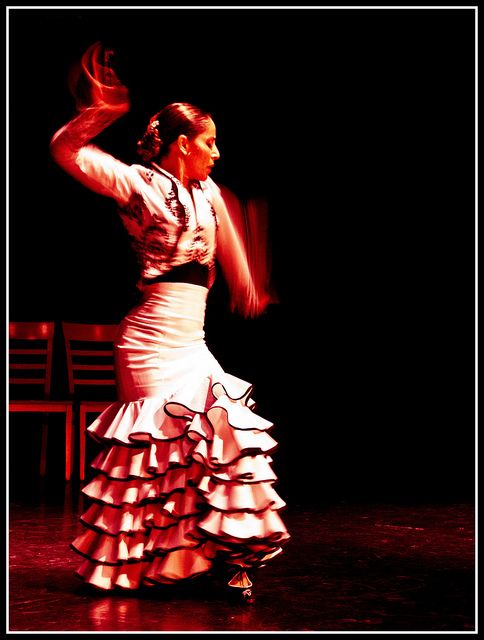 Probably, then the final understanding came that I couldn’t do without dancing, that this is the thing that I want to do all my life, but already professionally.
Probably, then the final understanding came that I couldn’t do without dancing, that this is the thing that I want to do all my life, but already professionally.
After university, I returned to Russia, entered the choreography department of the Arkhangelsk Art College. My trips began to Moscow, St. Petersburg, where I took master classes from the Spaniards. After graduating from college, I moved to Krasnodar: I wanted to be closer to the south - the northern climate never suited me.
– Well, Krasnodar is still closer to Spain than Arkhangelsk… How did the center of Kuban meet you?
– Here my independent life began, I got disciples. It was difficult: I taught and grew up with my students.
– When did Spain happen?
- Fast enough. I started learning the language, going to master classes in this country, getting to know and spending time with flamenco people. It shaped me both as a dancer and as an artist. I just fell in love with the south of Spain. Andalusia with its narrow streets, multi-colored tiles, semi-circular window shutters turned out to be close to me in spirit.
Andalusia with its narrow streets, multi-colored tiles, semi-circular window shutters turned out to be close to me in spirit.
It was very difficult for the Spaniards, but the teachers saw that I did not give up. Ursula Lopez, one of my first teachers, never took her eyes off me. It seemed to me that she understood my intention and put her strength into me, as she does with everyone who comes to her class for a reason. There, in principle, there is a very respectful attitude towards those who come to master classes - flamenco dancers are glad that they are interested in their art and are happy to pass it on to others.
– What else did they surprise you with?
- Because they have no age. We usually have adult dancers who only teach, they don't dance anymore. There is no such thing. When at my first master class in Moscow I saw Belen Maya – this is a very serious and weighty person in the world of flamenco, she starred in a film by Carlos Saura – I was amazed at her skill and speed of movements.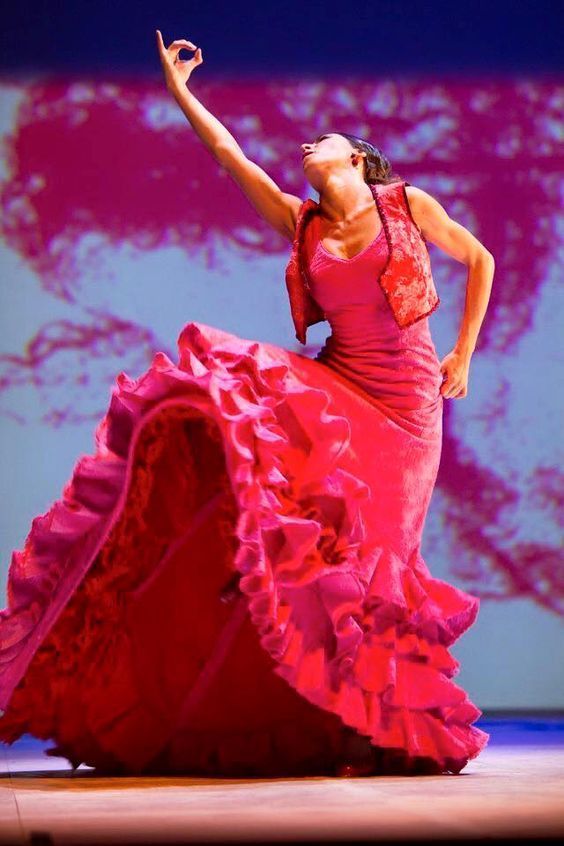 But then Belen Maya was far over 40.
But then Belen Maya was far over 40.
And there are many such examples! La Farruca, the mamita of a large gypsy clan that carries the flamenco culture. Despite her advanced age and rather heavy weight, she moves with incredible energy and grace!
I was also captivated by the openness and cordiality of people: when I got to a lesson with Carmen Ledesma, first of all she approached each student and hugged him. This Spaniards are very similar to our southerners.
– Is that why they also dance flamenco in the Kuban? And, in principle, why do you think Russians are very fond of Spanish culture?
- Good question. For some reason, it so happened that we dance our Russian dances a little. Look how often guys of Caucasian nationalities perform lezginka - it's great! This is their strength and unity. Thanks to the dance, they keep themselves in great physical shape, plus it is also an amazing psychological release. And we, Russians, somehow lost it.
Popular music does not relax the mind.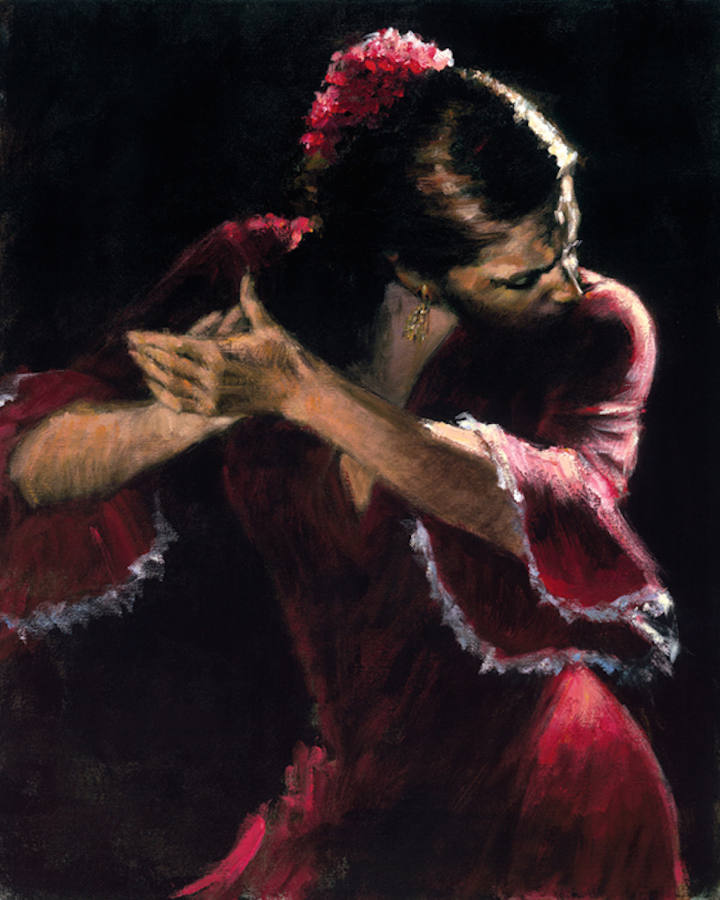 Because it is very flat: tuff, tuff, tuff. And folk music is diverse, and a person by nature wants this difference, which really gives us psychological relaxation. Apparently, feeling this intuitively, we are happy to master the culture of other peoples. And flamenco is danced not only in the Kuban, but also in Siberia, the Urals, the Far East and in Russian capitals.
Because it is very flat: tuff, tuff, tuff. And folk music is diverse, and a person by nature wants this difference, which really gives us psychological relaxation. Apparently, feeling this intuitively, we are happy to master the culture of other peoples. And flamenco is danced not only in the Kuban, but also in Siberia, the Urals, the Far East and in Russian capitals.
Speaking specifically about the Krasnodar Territory, I feel comfortable working with people here in terms of mentality, because southern people are open, and also weighty, they firmly plant their feet on the ground. As one of my students, a blooded Kuban, said: “We create life from the earth.” This is reflected in their character, feelings, because a person who often walks barefoot on the ground is more confident on his feet, he is closer to nature and to himself. It helps a lot to understand flamenco.
– Marina, for me, flamenco is the story of a woman, very middle-aged, with a broken heart, always with an unhappy love that José left. I don’t want to offend, but when I first saw you on TV, it seemed to me that you were much older.
I don’t want to offend, but when I first saw you on TV, it seemed to me that you were much older.
- I heard someone say, "When you dance flamenco, it's like you're connecting with God." I think everyone sees their own. Probably, tragic flamenco is known a little more in our country, because it touches our deep soul more. In fact, there are many styles, this is the dance of life, it contains all themes. There is, for example, the alegrias style, the name is translated as “joy”. There are styles with flirtatious notes and playful melodies - columbian, guajira. There is even a goofy, bizarre performance of flamenco. It all depends on how you feel and what kind of music you choose.
– By the way, you can also see adherents of this dance on Krasnaya Street on weekends. Is this your studio?
– Unfortunately, no. Rather, I don’t specifically participate there, but if I had a little more time, I would dance with pleasure on Krasnaya. We have several schools in Krasnodar.